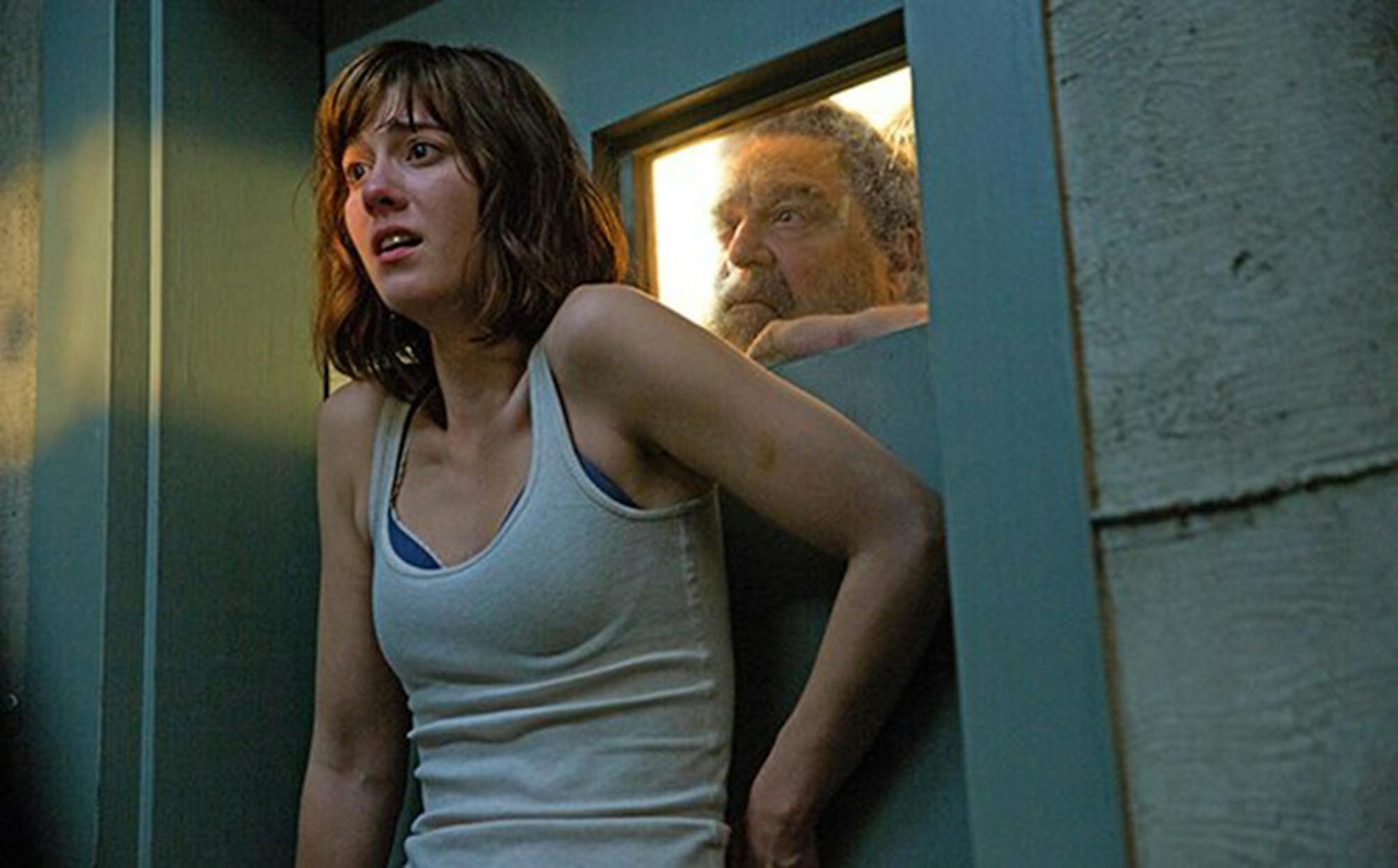“This drastic, clean-cut deprivation and our complete ignorance of what the future held in store had taken us unawares; we were unable to react against the mute appeal of presences, still so near and already so far, which haunted us daylong." — Albert Camus, “The Plague”
Albert Camus’ words, written in 1947, could be addressing both the viewers of and the characters in "10 Cloverfield Lane," that was released on March 11. The director, Dan Trachtenberg, brings the "Cloverfield" franchise down from the large-scale war-zones of the first film to the claustrophobic apocalypse bunker of the second. The close-quarter confusion translates into a larger feeling of hysteria as the movie draws on, forcing both the characters and the audience to ask the question: “What is actually happening?” In many films, this question could betray a general confusion in the filming and writing, but such confusion only adds to the gleefully awkward thrill that pervades "10 Cloverfield Lane." Trachtenberg masterfully uses unique characters: a cutting Ridley-esque protagonist in Michelle (Mary Elizabeth Winstead), the charming drifter Emmett (John Gallagher Jr.) and a brilliantly terrifying enigma in Howard (John Goodman) to provide a different yet satisfying take on the venerable story of extraterrestrial invasion. "10 Cloverfield Lane" is good, but it is also overwhelmingly white, which is a particular insult as the movie takes place in a state and a nation that both have sordid histories with race relations.
Michelle, fresh from an unexpected car collision, wakes up in a room — reminiscent of the "Saw" (2004-present) franchise’s famed cold, cramped compartments — and so does the viewer. Terrified and alone, she searches for answers for the rest of the movie. Her captor, the lonely Howard, is initially the only answer available. The legendary Goodman toys with the film’s feeling alongside the schizophrenic but no less engaging score by Bear McCreary, hopping from joy to sadness, mirth to madness. Howard is not a pervert, which he somewhat believably proclaims, but nevertheless, he is a bona fide weirdo. He awkwardly informs Michelle of their dire predicament: that in the time between her accident and her awakening, Earth was attacked by something, the nature of which they were unaware. Howard is a menacing overseer, one whose massive size relative to Michelle and proclivity for sudden shouting fills the bunker’s meager space with ease.
The third character, Emmett, who broke his arm fighting to get into the bunker after seeing a “flash like out of the Bible,” adds another character and another dimension to the action. Howard, Michelle and Emmett wade through this movie, and Trachtenberg takes them on a journey. Although the end of the movie is both intriguing and satisfying, the process of getting there pushes the characters and the viewer toward an eerily cheerful insanity. The antique jukebox and the shelves of food make this feel like a nuclear bunker, complete with moments of woe and anguish juxtaposed with the thrill and horror of a humanity-ending apocalypse.
The three characters intermingle clunkily and sometimes hilariously, taking a hiatus from the end of the world and a going on a sojourn into the world of family fun. The movie works as a slow-moving exhibition of stunning writing by Josh Campbell, Matt Stuecken and Damien Chazelle, for which Rod Serling could be proud. Indeed, "10 Cloverfield Lane" works more like an elongated episode of "The Twilight Zone" (1959 -1964) than a sequel to a low-budget found footage experiment (the original 2008 film "Cloverfield"), bringing the viewer ever-closer to the immeasurable power of the unknown, clawing at the natural human desire to understand and elucidating the terror of the implausible.
This begs the question: Where are the people of color? Louisiana, where the film is staged, is comprised of 32.5 percent Black Americans as of July 1, 2014. Proportionally and logically, one of the movie’s three main characters could be Black. Nevertheless, when will Hollywood finally realize that Black folk and all people of color exist and can be represented in film, even those that deal in the fictitious? This film, though excellently produced and well acted, is afflicted by the endemic disease that afflicts all of Hollywood: racism. Each film that refuses to acknowledge the existence and complexity of people of color reenacts the grand plunder of both land and life enacted by the colonizers and slaveholders of old on a smaller yet significant scale.
Despite strengths, '10 Cloverfield Lane' suffers from major blind spot

John Goodman and Mary Elizabeth Winstead in "10 Cloverfield Lane."
Summary
While "10 Cloverfield Lane" offers up a compelling narrative, its failure to include actors of color mars its efforts.
4 Stars





